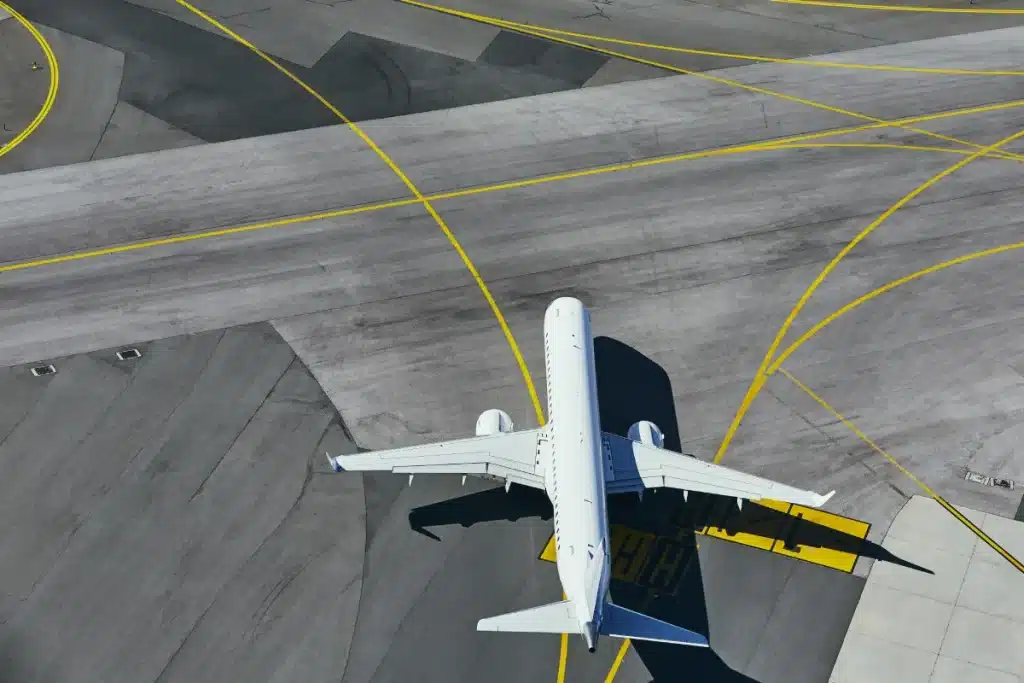Travelling through airports can often be a stressful and mundane experience. Lengthy lines, uninspiring terminals, and limited dining choices can take away from the joy of your journey. However, some truly magnificent airports have been built to completely redefine what it means to fly.
These airports provide a lovely experience that can turn even the longest journey into an exciting adventure. We’ve put together a list of the world’s top 10 airports designed to enhance your travel experience. These airports are destinations in their own right. They feature beautiful gardens, rooftop pools, upscale stores, fine dining, and more to ensure you have a great time while waiting for your flight.
10 Best Airports for Exceptional Passenger Experience and Amenities

1. Changi Airport, Singapore
Singapore Changi Airport, a 12-time winner of prestigious titles such as “World’s Best Airport for Dining and Leisure Amenities,” leads our list. Each of its terminals offers unique attractions. Terminal 1 has a rooftop pool and 24/7 spa, while Terminal 2 offers a 24-hour movie theater and a children’s playground.
Terminal 3 creates a nature lover’s paradise with a stunning skylight and gardens housing 200 plant species and butterflies. The Jewel complex completes the experience with 300 restaurants, shops, and Singapore’s largest indoor garden, featuring a mesmerising rain vortex show.
2. Hamad International Airport, Qatar
Situated in Doha, Qatar, this airport is a stunning piece of modern architecture that resembles a luxury resort more than a typical busy airport. Regardless of class, passengers appreciate its fantastic amenities, including lounges, quiet areas, and kids’ play zones. The terminal even houses a luxury hotel for passengers with long layovers, and there’s a golf simulator available to help travellers relax their muscles after a long journey.
3. Tokyo Haneda Airport, Japan
Tokyo Haneda Airport is known for its top-notch cleanliness and comfort. It boasts the world’s highest punctuality rate, with an impressive 8.83 out of 10 for on-time flights. The airport is famous for its vending machines, diverse dining options, and excellent shops and bars.
For longer layovers, you can book a capsule hotel or relax in their 24/7 hot spring pool for an authentic Japanese onsen experience. It also offers efficient transportation links to downtown Tokyo, just a 30-minute drive away.
4. Seoul Incheon International Airport, South Korea
This award-winning airport offers remarkable amenities such as movie theatres, private sleeping rooms, and a golf course. It also features seven indoor gardens, cultural performances, and a museum for exploring ancient Korean culture.
Passport control is exceptionally efficient, with average clearance times of 19 minutes for departures and 12 minutes for arrivals, ranking it among the world’s fastest airports. Notably, it maintains one of the world’s lowest luggage mishandling rates at just 0.0001%.
5. Paris Charles de Gaulle Airport, France
Despite being built in 1974, Paris Charles de Gaulle Airport has recently undergone extensive upgrades, adding new terminals and enhancing passenger facilities. It provides various dining and shopping options, from high-end stores to fast food and comfortable lounges.
Its standout features include easy access to the city centre via trains, buses, and taxis. The airport also incorporates modern technology like self-service check-in kiosks, automated baggage handling systems, and advanced security scanners for smooth and efficient operations.
6. Istanbul Airport, Turkey
Spanning 76.5 million square meters, Istanbul Airport ranks among the world’s largest. However, despite its immense size, the well-designed layout and clear signage facilitate easy navigation. Passengers also appreciate the friendly and helpful staff at Istanbul Airport. Moreover, the airport has numerous dining options, bars, a luxurious lounge, and even a mosque.
7. Munich Airport, Germany
Munich Airport stands out for its outstanding service, modern atmosphere, excellent facilities, and exceptional comfort. Terminal 2 stands out for its streamlined services, including automated check-in and security procedures for added convenience. The airport offers a city-like experience with around 150 shops and 50 restaurants and bars for travellers. It also has lounges, spas, and a dedicated play area for children.
8. Zürich Airport, Switzerland
Zürich Airport is a contemporary and clean international hub with numerous amenities, including 9 VIP lounges, a shower facility, a beauty salon, and over 40 dining options. Rental bicycles and inline skates are available, and day visits to the Swiss Museum of Transport Lucerne are planned for passengers with lengthy layovers. The airport has two rooftop terraces where visitors can enjoy beautiful views of the Alps and airport activity.
9. Tokyo Narita Airport, Japan
Narita Airport is renowned for its cleanliness and efficiency. It offers a wide range of dining options, including a Pokémon store and the inclusive Narita Sky Lounge Wa in Terminal 2. The airport also hosts art and cultural exhibitions, a unique scent experience, and provides cosy shower and nap rooms for relaxation. Travellers can even choose capsule beds at the Nine Hours Hotel or the Pet Inn Royal Hotel with vet services.
10. Madrid Barajas Airport, Spain
According to passenger votes, Madrid-Barajas Airport is the world’s tenth-best, reflecting its exceptional customer friendliness and state-of-the-art amenities. It provides numerous shopping and dining options, with 133 stores and 54 eateries.
The airport has amenities like children’s play areas, baggage storage, pharmacies, free Wi-Fi, and lounges. Madrid-Barajas Airport is also recognised for its low flight cancellations and above-average punctuality, making it Europe’s most passenger-friendly terminal.
Innovations Setting These Airports Apart
The best airports in the world 10 best airports in the world often feature innovative technologies to enhance the passenger experience and operational efficiency. Here are some tech innovations commonly found in these airports:
- Automated Baggage Systems: The best airports take advantage of cutting-edge conveyor systems and robotics to efficiently handle baggage. This reduces luggage lose and fastens the check-in processes.
- Biometric Security Screening:Leading airports embrace biometric technologies. They use facial recognition and fingerprint scans. These technologies simplify security and immigration processes. As a result, passengers can check in, go through security, and board their flights without the need for physical identification.
- Automated Passport Control and Immigration: The world’s leading airports now use automated passport control kiosks and e-gates. This simplifies immigration and customs processes, making them quicker and more effective.
- Sustainable Technology: Major airports are actively adopting eco-friendly measures to lessen their environmental impact. Most are installing solar panels, offering electric vehicle charging stations, and incorporating sustainable building designs.
- Mobile Apps and QR Codes: These airports provide mobile apps for flight updates and terminal navigation assistance.
- Smart Parking Solutions: Smart parking systems improve passenger parking by using sensors and mobile apps. These tools help travelers and visitors find available parking spaces and make payments easily.
Expert and Traveller Insights on What Makes an Airport Great
Many factors come into play when deciding if an airport ranks among the world’s best. Passenger feedback and expert insights highlight these key elements that contribute to an excellent airport experience:
- Accessibility: To provide passengers with a great experience, an airport should be easy to get to and get around in. This means having well-connected transportation options, clear signs in the terminals, easily identifiable gate locations, and smooth connections.
- Customer Service: Exceptional airports prioritise their passengers’ experience. This is through efficient processes, a welcoming and helpful staff, and personalised services, such as streamlined luggage check-in and exclusive lounge access.
- Facilities: The best airports go beyond the basics, offering passengers various facilities and amenities. These can encompass diverse shops, dining options, comfortable lounges, and entertainment choices like art galleries, cinemas, and even serene green spaces.
- Efficiency: Passengers often base their choices on the best airports in the world, depending mainly on efficiency. Efficient airports prioritise safe and punctual travel with swift check-in, security, baggage handling, and reliable transport options. They employ advanced screening technologies to enhance safety and passenger convenience, reducing wait times.
- Sustainability: The leading airports embrace technology and eco-friendly design to reduce their environmental impact and energy expenditure. This translates into greener and more enjoyable airport spaces, incorporating initiatives like renewable energy, sustainable architecture, and environmentally responsible practices.
The Future of Airport Design: Potential for New Contenders to Emerge
The future of airport design will be influenced by technology, sustainability, passenger needs, and global changes, creating opportunities for new players in airport design and operations. Here are the key factors and trends shaping this future:
- Innovative Technology Integration: New contenders in airport design can harness cutting-edge technology to create more efficient, passenger-friendly terminals. This might include advanced biometric systems for quicker security checks, self-service kiosks for check-in and baggage handling, and smart infrastructure that improves navigation within the airport.
- Sustainability Focus: The aviation industry is under increasing pressure to reduce its environmental footprint. Emerging airport designers can prioritize sustainability by incorporating renewable energy sources, green building materials, and eco-friendly transportation options. This benefits the environment and appeals to eco-conscious travellers.
- Flexible and Modular Design: Airport layouts are being reimagined to be more flexible and adaptable. New entrants can explore modular construction techniques, allowing for easier expansion and modification as passenger numbers fluctuate or new technology emerges.
- Enhanced Passenger Experience: Future airports can focus on providing a more enjoyable and stress-free experience for passengers. This includes incorporating leisure and entertainment options, improved dining and shopping choices, and comfortable waiting areas.
Conclusion
These top 10 airports redefine the travel experience by offering exceptional amenities and innovations. As airport design keeps progressing, we can anticipate some pretty thrilling developments that will make our travel adventures even better. For expert airport operations and technology assistance, consider Airport Gurus. We provide expert advice to ensure a smooth and enjoyable journey, backed by specialist technology support and airport expertise consulting.



